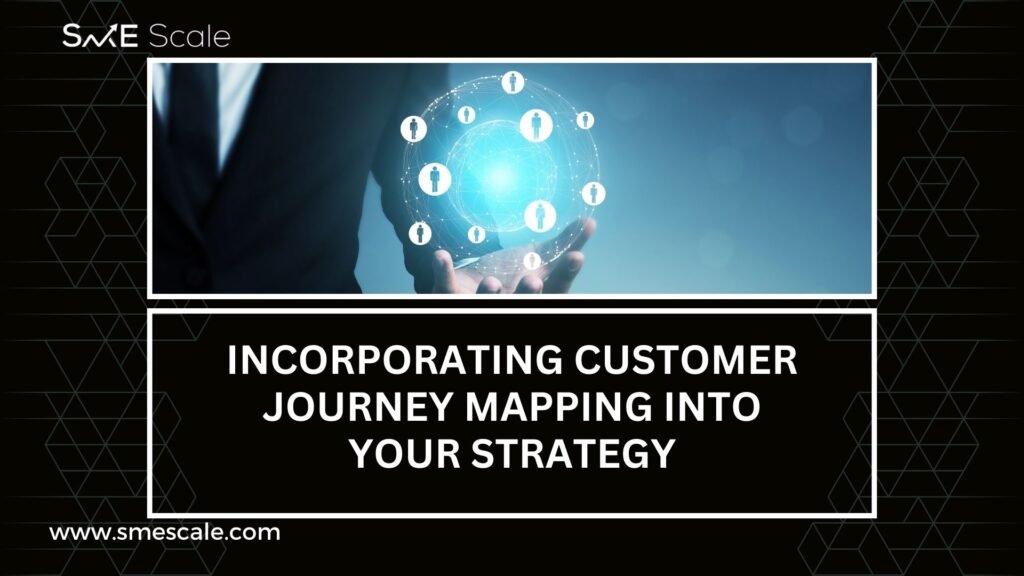Incorporating Customer Journey Mapping into Your Strategy: A Guide for SMEs

In the competitive world of business, understanding your customer’s journey is no longer optional—it’s essential. Customer journey mapping is a powerful tool that enables SMEs to visualize the path their customers take, from the first interaction with your brand to long-term loyalty. At SME Scale, we’ve seen how this strategic approach transforms marketing efforts, improves customer retention, and drives measurable growth.
In this blog, we’ll explore the concept of customer journey mapping, provide a real-life case study, and uncover the psychological principles that make this strategy so effective.
What Is Customer Journey Mapping?
Customer journey mapping is the process of creating a visual representation of the various stages a customer goes through when engaging with your business. These stages often include:
Awareness: The customer becomes aware of your brand or product.
Consideration: They evaluate your offerings and compare them with competitors.
Decision: The customer makes a purchase or engages your services.
Retention: Post-purchase, they continue to interact with your brand.
Advocacy: Loyal customers recommend your business to others.
Why Customer Journey Mapping Matters for SMEs
For small and medium-sized enterprises, understanding the customer journey can lead to:
Enhanced Customer Experience: Identifying pain points allows you to improve interactions at every stage.
Increased Retention Rates: Satisfied customers are more likely to return.
Optimized Marketing Strategies: Tailored campaigns resonate better with your audience.
Improved ROI: Focusing resources on high-impact areas leads to cost-effective growth.
Case Study: Transforming Customer Engagement for a Subscription Box Service
One of SME Scale’s clients, a subscription box service offering eco-friendly household products, faced a high churn rate. Despite their innovative products, customers were not staying beyond the first few months.
Challenges Faced:
Limited understanding of the customer lifecycle.
Generic marketing messages that failed to address specific customer needs.
Frustration in the onboarding process.
Steps Taken by SME Scale:
Mapping the Customer Journey Using AI-powered insights, SME Scale created a detailed customer journey map that highlighted:
Where customers were dropping off.
Key decision points influencing purchases.
Gaps in post-purchase engagement.
Improving Onboarding The team streamlined the onboarding process by creating a series of personalized emails and tutorials to guide new customers. The emails used psychological triggers like reciprocity (offering free tips) and social proof (customer success stories).
Targeted Marketing Campaigns By identifying common pain points during the consideration phase, SME Scale crafted a social media campaign emphasizing the convenience and eco-friendly benefits of the subscription box.
Retention Strategies SME Scale introduced loyalty rewards, such as exclusive discounts for long-term customers, tapping into scarcity psychology to create urgency for renewal.
Results Achieved:
Customer churn rate reduced by 35%.
Average customer lifetime value increased by 40%.
Positive reviews on social media doubled, boosting brand advocacy.
The Psychology Behind Customer Journey Mapping
Understanding human psychology is at the core of effective customer journey mapping. Here’s how psychology enhances your strategy:
Emotional Resonance Customers remember experiences that evoke strong emotions. Mapping the journey allows you to create moments that surprise, delight, and engage your audience.
The Power of Anticipation Creating clear expectations at every stage of the journey keeps customers engaged. For example, sending a “what’s next” email after a purchase builds excitement.
Behavioral Patterns Recognizing patterns, such as the time it takes for a customer to decide on a purchase, enables you to send timely, relevant follow-ups.
Steps to Create Your Customer Journey Map
Define Your Customer Personas Understand who your customers are, their goals, and their challenges.
Identify Key Touchpoints Map out every interaction customers have with your brand, both online and offline.
Collect Data Use tools like CRM software or AI-powered analytics to track customer behavior and identify patterns.
Analyze Pain Points Pinpoint stages where customers face difficulties or drop off, and develop strategies to address these issues.
Test and Refine Continuously measure the effectiveness of your journey map and update it based on feedback and results.
How SME Scale Can Help
At SME Scale, we specialize in helping SMEs incorporate customer journey mapping into their overall strategy. Using a combination of AI-driven insights and expert guidance, we ensure your business delivers exceptional experiences at every touchpoint.
With our Growth Guarantee, we promise measurable results within 39 days, or your money back. Whether you’re a startup looking to define your journey or an established business aiming to refine your process, we’re here to support your success.
Conclusion
Incorporating customer journey mapping into your business strategy is not just about improving customer experience—it’s about building long-term relationships that drive sustainable growth. By understanding your customers’ needs, addressing pain points, and leveraging psychological insights, you can create a journey that leads to loyalty and advocacy.

